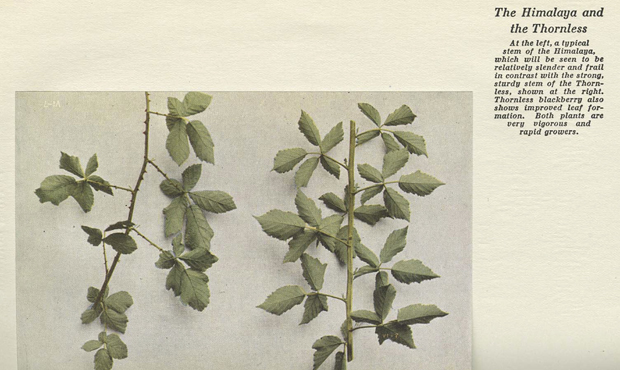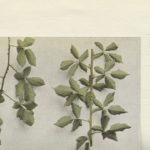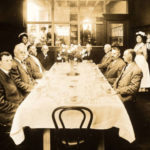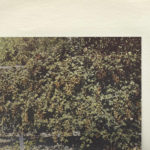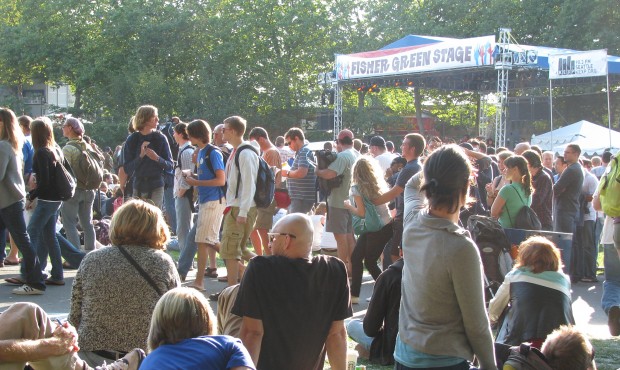Invasive blackberry species conquered the Northwest a century ago
Jul 31, 2019, 8:21 AM | Updated: 8:37 am
Along roadsides and streams, and at the edge of forests all around Puget Sound, those sweet and juicy blackberries will soon be ripe and ready to be turned into pies and jam. But have you ever stopped to consider the thorny origins of this non-native, yet oh-so-tasty fruit?
The real story behind Northwest’s first non-Native settlement
Most of those vines you see almost everywhere around here are a variety called Himalaya (or sometimes “Himalayan”) blackberry, and they are considered by local authorities to be an invasive species, as well as a threat to native plants and animals.
Marta Olson, education specialist for the King County Noxious Weed Control Program, says that Himalayan blackberries have been growing in Western Washington for more than a hundred years. She says the plant does very well in our climate.
“Part of the reason it’s so invasive is that it’s really happy in a variety of different habitats, so anywhere you go in Western Washington, for the most part, you can find this plant,” Olson said earlier this week from her office in Seattle. “It grows in the sun, it grows in the shade, it grows in wet soils, it grows in dry soils, it’s just not picky at all. So it’s had a pretty big impact on all those ecosystems.”
Olson says while the Himalayan blackberry grows practically everywhere, it’s been particularly damaging where the thorny canes have crowded out native species along waterways – such as seedlings of trees – and contributed to degrading salmon habitat by eliminating crucial water-cooling shade.
How it got here
The guy who gets the blame or the credit for the Himalayan blackberry, depending on your perspective, is late-19th century and early-20th century West Coast uber-botanist and cultivar enthusiast Luther Burbank. During his long and busy career, Burbank created a number of famous hybrids including the Santa Rosa plum, the Russet Burbank (the potato that McDonald’s uses for French fries), and the Shasta daisy.
Rachel Spaeth is the garden curator of the Luther Burbank Home and Gardens in Santa Rosa, California and she’s working on her PhD about Luther Burbank at UC Davis. She told me that Luther Burbank didn’t exactly create the Himalayan blackberry like he did those other hybrids, but he is responsible for popularizing the plant in the United States beginning nearly 140 years ago.
Spaeth says that Burbank, who was born in Massachusetts in 1849, wasn’t a trained botanist, but he was incredibly enthusiastic about experimenting with plants.
“His driving force or goal or motivation was that he hoped that if nothing he would ‘create better fruits and fairer flowers for people for the betterment of mankind,’” Spaeth said on Monday from her home near Santa Rosa.
Sometime in the 1880s, Burbank began experimenting with berries, attempting to create a thornless variety, and tinkering with traits such as color and flavor by cross-pollinating different native varieties. But he also sought out specimens in other parts of the world. That’s how he got a hold of seeds of what he would eventually christen the Himalayan blackberry.
“He found the Himalayan, a seedling of one of the ones he had imported from India, to be incredibly vigorous and to have very delicious consistently sweet berries,” Spaeth said. “So in 1885, he was the person that introduced the United States to the Himalayan blackberry, but I like to say that it’s the birds that moved it around so much.”
Seeds of the Himalayan blackberry were indeed spread widely by bird droppings (birds ate the yummy fruit and let nature run its course over some random piece of ground somewhere). But Burbank also worked with plant wholesalers in California to widely distribute many of the plants he imported or created. Newspaper ads in Seattle from as early as 1905 can be found that show Himalayan blackberry canes being offered for sale to the public by agricultural retailers and private parties.
Burbank published a 12-volume series about his work back in 1915. In volume six, he wrote almost lovingly of the Himalayan blackberry he had unleashed on North America 30 years earlier.
“It is a plant of extraordinary vigor. [A s]ingle cane may grow more than 25 feet — sometimes even 50 feet — in a season,” Burbank wrote. “And in point of fruit production, the Himalaya far surpasses any other berry plant ever grown. Reports tell of a single bush bearing 200 pounds of berries in the season.”
Those Seattle newspaper ads offering Himalayan blackberry canes for sale continue up into the teens and 1920s. But then, something changed.
Tide shifts against blackberry
Cecil Solly wrote a gardening column for decades and appeared on local radio stations talking about gardening from the 1920s to the 1960s, and had his own brand of seeds called “Solly’s Choice.” In many ways, he’s the precursor to Ciscoe Morris or even Ed Hume, who took over Solly’s program on KIRO Radio when Solly passed away in 1965.
In a Cecil Solly article about Victory Gardens – the World War II effort to increase civilian production of produce to alleviate wartime shortages – from the Seattle Times on March 30, 1944, it’s clear that something had changed, if ever so slightly, about public perception of the Himalayan blackberry.
One of the most pointed pieces of evidence that gardeners are planning to grow and increase supply of vegetables and fruit is the number of letters asking how to get rid of blackberries. First, however, the government estimates that there will be about 43 perent less fruit available in 1944 for civilian consumption. Victory gardeners must take up this ‘slack’ also. A good, big patch of Himalaya blackberries might provide a welcome addition to your fruit for canning or preserves. It might be wise to consider whether it would be better to use the blackberries as a crop.
It’s unclear exactly when the Himalayan blackberry came to be viewed as a nuisance by gardeners. But it was by perhaps as early as the late 1920s or the 1930s that the canes were growing practically everywhere without any assistance, and maybe getting in the way of other desirable plants. It was unlikely that anyone was paying money for Himalayan blackberry canes to plant. Nature and those helpful birds, and the “extraordinary vigor” of the variety were such that it was probably doing just fine without any assistance.
Does Rachel Spaeth think that Luther Burbank, who died in 1926, might feel almost gleeful about how successfully the Himalaya blackberry had spread, regardless of its designation in so many areas as an invasive species?
“I think that ‘gleeful’ is probably a really good word for that,” Spaeth said. “I mean, it’s a superior fruit, so it does have that going for it. And it’s funny, here [in California] it became habitat for a native California Fairy Shrimp in the waterways, which is an endangered species, so there are places where you’re actually not allowed to dig it out.”
Back in the Evergreen State, Marta Olson says the Himalayan blackberry was officially listed as a “Washington State Noxious Weed” in 2009.
But, for that favorite companion to pie crust and scones, it’s not exactly a case of “WANTED: DEAD OR ALIVE.”
Local ‘geographic insults’ you won’t find on a map
“In King County we have regulated weeds and unregulated weeds, and so weeds that are regulated are required to be controlled by property owners and those are the ones that we often help out with, [and] we have our regional weed specialists who go around and focus on those weeds,” Olson said. “And then we have unregulated weeds, which are actually the more widespread weeds, but they have just gone so far that we don’t really have a hope of eradicating them at this point. And blackberry is one of those.”
“We’re never going to get rid of Himalayan blackberry in Western Washington,” Olson added.
If you can’t beat ’em … bake them?
And so, if you can’t beat ‘em, you might as well join ‘em, as they say.
Asked if she had any good Himalayan blackberry recipes, Rachel Spaeth suggested her family’s tasty variation on an old favorite.
“Instead of blackberry pie, I make blackberry meringue pie,” Spaeth said. “You do it like a lemon meringue pie, but you use blackberry juice instead of lemon juice and that gives you a blackberry pie that’s not seedy. And then I just top-dress with blackberries for decoration and then the meringue, and it’s quite fantastic if I do say so myself,” she said, chuckling.
“It turns a beautiful purple color.”
Once he settled in California in the 1870s, Luther Burbank didn’t travel much. He did come to Seattle in 1909 to speak at the Alaska Yukon Pacific Exposition (AYPE), the city’s first world’s fair. He spoke to a large crowd in early September 1909, and was lauded as a hero for the work he had done to create an/or promote so many new species of plants.
Luther Burbank Park on Mercer Island is named for the botanist. The name was originally applied in 1931, when what had been the Boys Parental School became Luther Burbank School. The former school grounds were purchased by King County in 1969.
It’s been pointed out more than a few times over the years that several areas of Luther Burbank Park are choked by the very same blackberry vine first introduced to the United States by the park’s namesake.
And finally, after exhaustive searching, no recipe as tasty sounding as Blackberry Meringue Pie could be found for King County’s other noxious weeds: The Poison-hemlock, Tansy ragwort, Giant Hogweed, Knotweed and Garlic mustard.
Rachel Spaeth’s Blackberry Meringue Pie
Crust
- 10 whole graham crackers
- 3 tbsp vegetable oil
- 3 tbsp maple syrup
Baking temp: 350 degrees Fahrenheit
Grease an 8″ pie plate. Using a food processor or a thick bag and a rolling pin, grind graham crackers into fine crumbs. Add maple syrup and vegetable oil, and mix until combined. Press crumbs into the pan, extending up the sides. Bake at 350 degrees for 10 minutes; let cool.
Filling
- 5 tbsp corn starch
- 3/4 cup sugar
- 1/4 tsp salt
- 2 cups boiling water
Mix dry ingredients together. Add boiling water. Simmer on low heat. Cook until clear and thick, stirring often. Be patient. Otherwise your pie will be runny. Remove from heat, and stir in:
- 1/4 cup blackberry juice, strained to remove seeds
- 3 egg yolks (you’ll use the whites later)
- 2 tbsp butter
I’m not really sure how many blackberries this takes. I usually just keep squishing them until I have enough juice to make a quarter of a cup. If you have a juicer, fancy! Your hands will be the least purple. I typically strain them using a jelly bag or clean piece of stocking material. Use gloves if you don’t want purple hands. After stirring in the blackberry juice, egg yolks, and butter, sit the pan in cold water to chill the filling evenly. After cool, add the filling to your cooled pie crust.
Meringue
- 3 egg whites
- 6 tbsp sugar
- 1/4 tsp cream of tartar
Beat egg whites and cream of tartar until foamy. Add 6 tbsp of sugar, one tbsp at a time. Beat until it forms stiff peaks. Top your pie filling with the meringue. Bake until the meringue is just starting to turn golden brown; 12-15 minutes.
Top with fresh berries as decoration. Voila! A blackberry pie with a fraction of the seeds! Cool several hours before cutting. Cut with a wet, hot knife.

